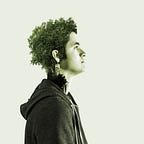Backpacking Yosemite—Equipment
This post is part of the “Backpacking Yosemite” Series. If you haven’t done so yet, please start reading the overview post:
Backpacks
Let’s start with the essentials. I think no one of us had a very strong opinion for or against a certain brand. We all opted for over 65L backpacks and I wouldn’t recommend anything less for multi day hikes. Keep in mind that you also need to pack at least one bear-proof food canister, which takes up a lot of space.
Marvin got himself an 80L backpack by Mountaintop. Robert carried his 75L Aircontact by Deuter, which is quite pricey. I brought a 75L backpack by Mardingtop, which is a bit on the heavy side but otherwise fine. It also did a great job on previous trips. Personally I think Marvin’s backpack was the best one.
Tents
All of us only had single person tents or huge (and heavy) tents for festivals. That’s why Marvin and Robert decided to buy a new one. They opted for a two person tent by The North Face called Talus 2. That was a great choice, it was lightweight, roomy and super easy to setup (also quick to disassemble).
I decided to take my Flying Tent with me. It’s actually a hammock that comes with a fine hole mesh and a rainfly. It can also be setup as a tent, which comes in handy in places where no trees are nearby. Besides being quite heavy for a single person tent, it’s an awesome product and I can highly recommend it!
Food
For hot meals we brought canned food (Chilli, Steak & Potato, …) and a lot of Ramen noodles. Cooking worked great with the tiny MightyMo cooking system by Jetboil.
Canned food is heavy and fills up a lot of space, as you also need to pack the empty cans. That’s why we didn’t bring them with us on longer hikes and enjoyed them at the car or on campgrounds instead. Noodles are always great. No reason not to bring them.
We also had a lot of bread with peanut butter, nutella or honey. Honey got bonus points because we didn’t need to use (and clean) a knife, we just squished it out of the tube.
Beef jerky was our favorite snack, but it’s not cheap. Anyway, we brought quite a lot with us and were happy that we did that. It was a welcome change to all the nuts and energy bars.
We repacked most of our food into 1 liter or 3 liters zipper freezer bags, which made it easy to prepare meals for every day. It’s also less weight and trash to carry.
Drinks
Well, I hope you don’t expect too much more than water here. Overall, we carried 9 liters (~2.4 gallons) in our backpacks, but not always full (depending on where the next water source would be).
To spice thinks up a little we got some iced tea powder, which we actually emptied during our trip. So I guess that was well worth it. As mentioned earlier, we also purified our water just to be safe.
Camera Gear
Deciding which camera and lenses to bring was tough for me. For the body, I had the choice between my full-frame 6D and the mirror-less M5. Although I would have loved to save some weight, I decided to go with the heavy 6D. Mainly because I wanted to capture timelapses, which works best with the DSLR because of the longer battery life and the availability of Magic Lantern.
Attached to my bodies are mainly my Tamron lenses, an SP 15–30mm F/2.8 Di VC USD, an SP 24–70mm F/2.8 Di VC USD or an SP 70–200mm F/2.8 Di VC USD G2. They cover a focal length from 15 to 200mm with an aperture of F/2.8, which is awesome! Obviously all of that would be a pain to carry around, so I ditched the tele-zoom and brought the wide-angle and standard-zoom lenses instead.
That turned out to be a great choice. I used the fast wide-angle lens almost exclusively at night, but I hope you agree that photos like the one above are absolutely worth carrying heavy lenses!
Besides that I brought my Sirui ET-2204 carbon fiber tripod, an Hoya ND 1000 filter for my standard-zoom and 4 spare batteries.
Power
I used my phone for offline navigation and GPS logging (in addition to a topographic map and a compass). For charging it as well as for my camera batteries, I took my 20100 mAh power-bank by RAVPower with me.
To keep it charged, I strapped a solar charger by Anker to my backpack. Although it wasn’t able to charge the power-bank completely in one day of hiking, it was enough to not run out of power.
I’ll talk about some more equipment in the upcoming posts, why don’t you keep on reading about our first hike:
